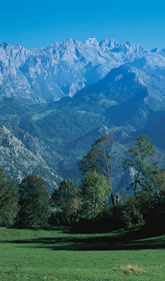In the first quarter of 2010, a 4.5% growth in electrical demand was recorded. However, the thermal gap available for thermal power plants was reduced, having displayed a 6.1% decrease in the demand for natural gas in plant generation.
At the end of March, yearly reservoir levels sat at 93% capacity, 32% above the figure recorded a year earlier. These figures suggested that over the upcoming months, the potential to produce hydroelectric energy would continue to remain high.
Electrical production through wind energy increased by 40% during the first quarter, rising to 13.2 TWh. If hydroelectric production is included to this first quarter, the figure stands at 27.9 TWh. This can be compared to the 14.6 TWh recorded for nuclear production (a 2.3% increase), the 4.1 TWh for coal power stations (a 64% decrease) and the 14.5 TWh for combined cycles.
During the second quarter of 2010, gas demand for electricity generation in power plants decreased by 21.8%. This decrease dragged the global demand for natural gas in Spain down by 4% over the second quarter.
Hydroelectric production rose to 81.7% in the first quarter and wind energy generation increased by 28.7%. When taken together, these two systems contributed 35% to the electrical demand in Spain over this period.
The reservoir levels for hydroelectric use sat at 80.4% capacity at the end of June, 26 points above the figure recorded a year earlier.
In the third quarter, sales to combined cycle plants decreased by 20.4% due to the increase in hydroelectric production (+75.4% up to September) and in wind energy production (+24.7%), compared to the same period in 2009.
Over the first 9 months of 2010, the use of natural gas for power plant electricity generation reached 101,610 GWh, in contrast to the figure reached in 2009 of 122,610 GWh.
Moreover, the share representing the market of power plant generation on total natural gas sales had been decreasing, having recorded 35% over the first 9 months of 2010. Over the same period in 2009, this share sat at 41.4% and until September 2008, it was at 43.3%.
The reservoir levels for hydroelectric use sat at 58% capacity at the end of September. Thus, hydroelectric generation potential remained higher over the following months than that recorded in the previous year, thereby limiting the thermal gap available for natural gas.
In the fourth quarter, sales to combined cycles decreased by -12.5%. Hydroelectric production continued to grow at a slower rate than in previous periods of the year. Wind energy generation was also notable given that it registered relatively low levels in the final months of 2010 when compared to 2009, with decreases in November and December.
The push for electrical consumption in this final period of the year must be highlighted, displaying an increase of 7.3% in November (colder than the same month in 2009) and of 4.3% in December, above the yearly average.



